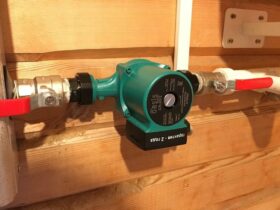Onions are a fairly long -term plant. In the first period, a bulb is obtained from the seed, in a diameter of 1-2 centimeters. For the next period, quite large bulbs are already formed, which give peculiar arrows for the third year, and in the future, buds with seeds are already formed on them.
Luke requirements are the same:
Onions very easily tolerates cold, as it is considered a refined plant. Spring frosts are not afraid of onions if we are not talking about loops phase. In this phase, onions can die even at a temperature of 2-3 degrees. The optimum onion temperature is approximately 15-25 degrees. Onions are capable of carrying frosts up to -7 ° degrees, and heat over 40 degrees. To light, onions are quite demanding. Luka requires very good lighting, especially if you grow it from ordinary seeds. The plant is not too demanding on moisture, but it still needs to be watered, and do it as often as possible. Especially in the first period, moisture is necessary, and these days it is necessary to water the onion several times a day if the weather is dry on the street. To cut out the Lucavets themselves, you need very hot weather.
Growing onions occurs as follows: the future crop of onions depends in many ways on Sevka. Hewings, as usual, is grown from a black onion. Before sowing, onions must be soaked in order to plant wet seeds in the ground. Soak seeds for 2-7 days, at a temperature of 15-20 degrees. If you do not have enough time for a full lock, this period can be reduced to 8 hours. With an accelerated lock, you need to use water, a temperature of 40-50 degrees. Onions are sown in autumn and in winter, it already depends on the soil. Before sowing, the area where the future onion will grow, it is necessary to leve a rake. Onions should be planted with beds, the width of which is about 1 meter. Observe the distance between the rows within 10-15 centimeters. You can plant no more than 10 grams of seeds per square meter of the site per square meter. After sowing seeds, it is advisable to put in the ground also humus, a layer of 1 centimeter. On top you can still sprinkle with peat or leaf soil. If you want to get onions, sowing should be used with a diameter of about 1 centimeter. Before planting, separate the dried leaves from the bulbs and rinse well. If last season your bow was struck by such a disease as powdery mildew, then before planting seeds, it needs to be disinfected. To do this, warm the seeds for 8 hours at a temperature of 40 degrees. You need to do this two weeks before landing. Sevok is planted in heated soil in May, preferably at the beginning, but look at the weather. Plant the sowk in 3-5 lines, observing the width of about 1 meter. The depth of landing must be determined in each individual case. The bulbs must fully enter the moist layer of the soil so that they can be sprinkled with humus. A layer of humus no more than two centimeters so that your onion does not burn, so to speak ..
You need to care for the right thing:
In the first pair of three weeks, you need to pay special attention to watering, since moisture is very important for the formation of leaves and roots. After the soil has been watered, it needs to be loosened. Top dressing during this period is not needed, so do not waste money in vain. If arrows form during growth, they must be cut off. After cutting, the onion can be fed with nitrogen-potassium fertilizer, but you do not need to be too zealous. The entire period of onion growth is necessary to maintain the upper layer (4-5 centimeters) in a loose state so that air can reach the roots. As well as with loosening and weeds will not be able to grow. Usually, for the entire growth period, approximately 5-7 soil looms are carried out. As soon as the bulb begins to form-phosphorus-potassium fertilizer can be added to the ground, best in the form of a solution. As the onion grows, it is necessary to regularly remove the web from the leaves, which will form there.















Leave a Reply
View Comments